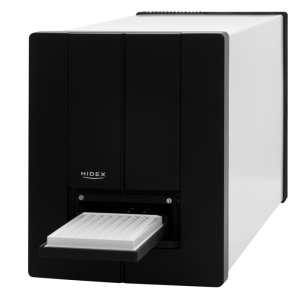Hidex Sense used to develop COVID-19 testing
19/07/2021

University of Helsinki develop a COVID-19 rapid test using the Hidex Sense
Congratulations to Jussi Hepojoki and his colleagues at the Department of Virology, the University of Helsinki for their excellent work on the development of a rapid PCR test for Covid-19 that uses a TR-FRET assay for SARS-CoV-2 performed on the Hidex Sense Multi-Mode Microplate Reader.
A simple and rapid test for Covid-19
The COVID-19 pandemic has led to an unprecedented increase in demand for rapid and reliable diagnostic tools for coronavirus 2019. Jussi Hepojoki's team presents a simple and rapid test principle for antigen detection and demonstrates its functionality by detecting severe acute respiratory syndrome coronavirus 2 (SARS-CoV-2) antigens in nasopharyngeal swabs. The method is based on the detection of SARS-CoV-2 nucleoprotein (NP) and protein S (SP) by time-resolved Förster resonance energy transfer (TR-FRET) with labelled polyclonal anti-NP and anti-SP antibodies as donors and acceptors.

TR-FRET signal measurement with the Hidex Sense
The TR-FRET signal was measured directly after and 7, 15, 22, 30, 45, 60 and 90 min after the first measurement with a Hidex Sense microplate reader (Hidex Oy, Finland). FRET donor excitation was performed at 330 nm, and after a delay of 70 μs, the donor and acceptor signals were measured for 100 μs at 616 and 665 nm, respectively. TR-FRET signals were expressed as HTRF ratios, calculated as follows: HTRF ratio = emission at 616 nm/emission at 665 nm × 10 000.
The assays are performed in a buffer that neutralises the infectivity of SARS-CoV-2, and the assay is relatively simple to set up as an 'in-house' test. Here, SARS-CoV-2 was used as the model pathogen, but the principle of the assay applies to other viral infections, and the assay format could easily be adapted to high-throughput testing.